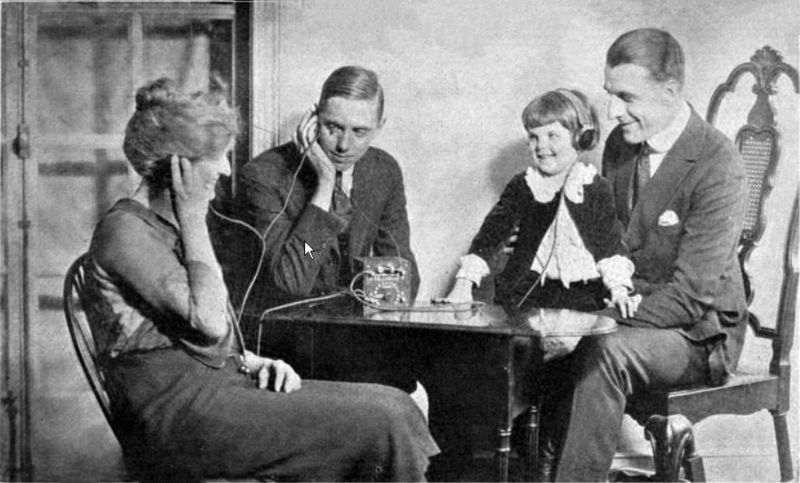Íomhá:Crystal radio advertisement.png

Size of this preview: 800 × 483 picteilín. Other resolutions: 320 × 193 picteilín | 640 × 386 picteilín | 881 × 532 picteilín.
Taispeáin leagan ardtaifigh den íomhá (881 × 532 picteilín, méid comhaid: 274 KB, cineál MIME: image/png)
Stair chomhaid
Cliceáil ar dáta/am chun an comhad a radharc mar a bhí sé ag an am sin.
| Dáta/Am | Mionsamhail | Toisí | Úsáideoir | Nóta tráchta | |
|---|---|---|---|---|---|
| faoi láthair | 17:22, 2 Bealtaine 2021 |  | 881 × 532 (274 KB) | Materialscientist | FFT |
| 19:50, 12 Eanáir 2014 |  | 881 × 532 (173 KB) | Chetvorno | A clearer, less grainy, higher quality version of image | |
| 08:26, 25 Samhain 2010 |  | 823 × 494 (91 KB) | Chetvorno | {{Information |Description= {{en|Photo of a family in the 1920s listening to a Wikipedia:crystal radio. From a 1922 advertisement for Freed-Eisemann radios in ''Radio World'' magazine. Crystal sets are not powerful enough to power loudspeakers, so |
Úsáid comhaid
Tá nasc chuig an gcomhad seo ar 2 an leathanach seo a leanas:
Global file usage
The following other wikis use this file:
- Úsáid ar bat-smg.wikipedia.org
- Úsáid ar en.wikipedia.org
- Úsáid ar en.wikiquote.org
- Úsáid ar es.wikipedia.org
- Úsáid ar eu.wikipedia.org
- Úsáid ar gl.wikipedia.org
- Úsáid ar he.wikipedia.org
- Úsáid ar hy.wikipedia.org
- Úsáid ar ja.wikipedia.org
- Úsáid ar lv.wikipedia.org
- Úsáid ar ru.wikipedia.org
- Úsáid ar rw.wikipedia.org
- Úsáid ar ta.wikipedia.org
- Úsáid ar tg.wikipedia.org
- Úsáid ar vi.wikipedia.org
- Úsáid ar zh.wikipedia.org



